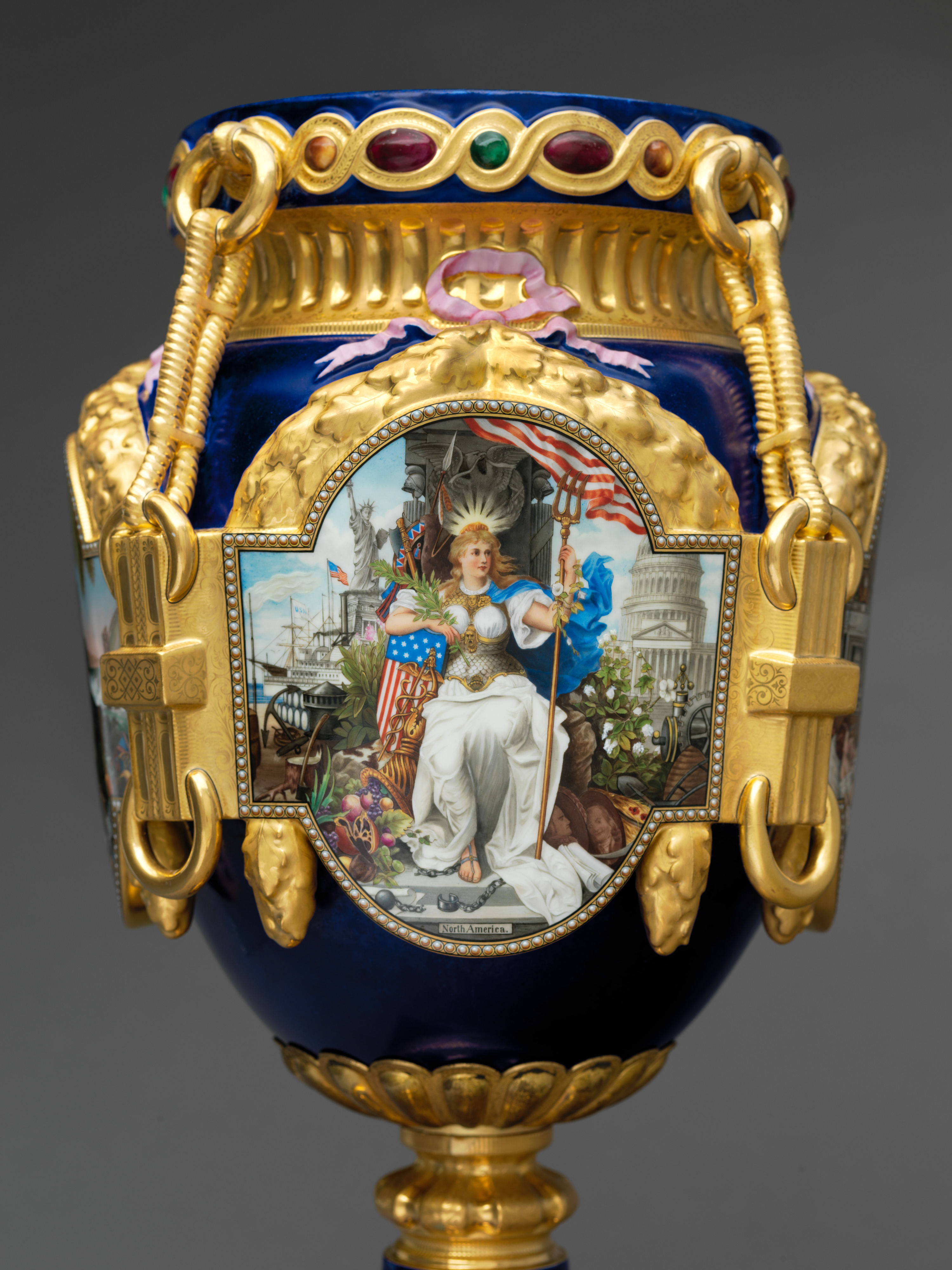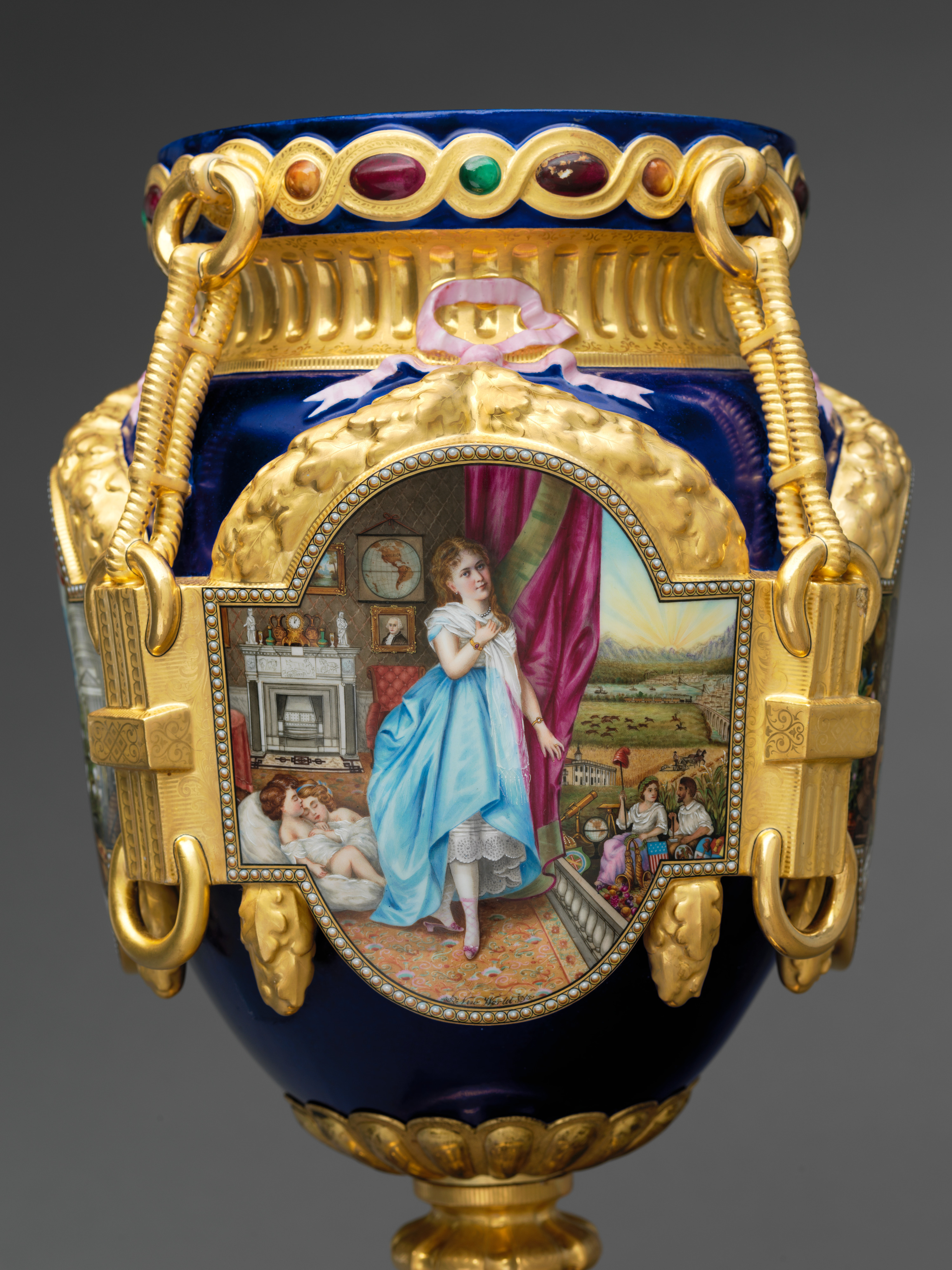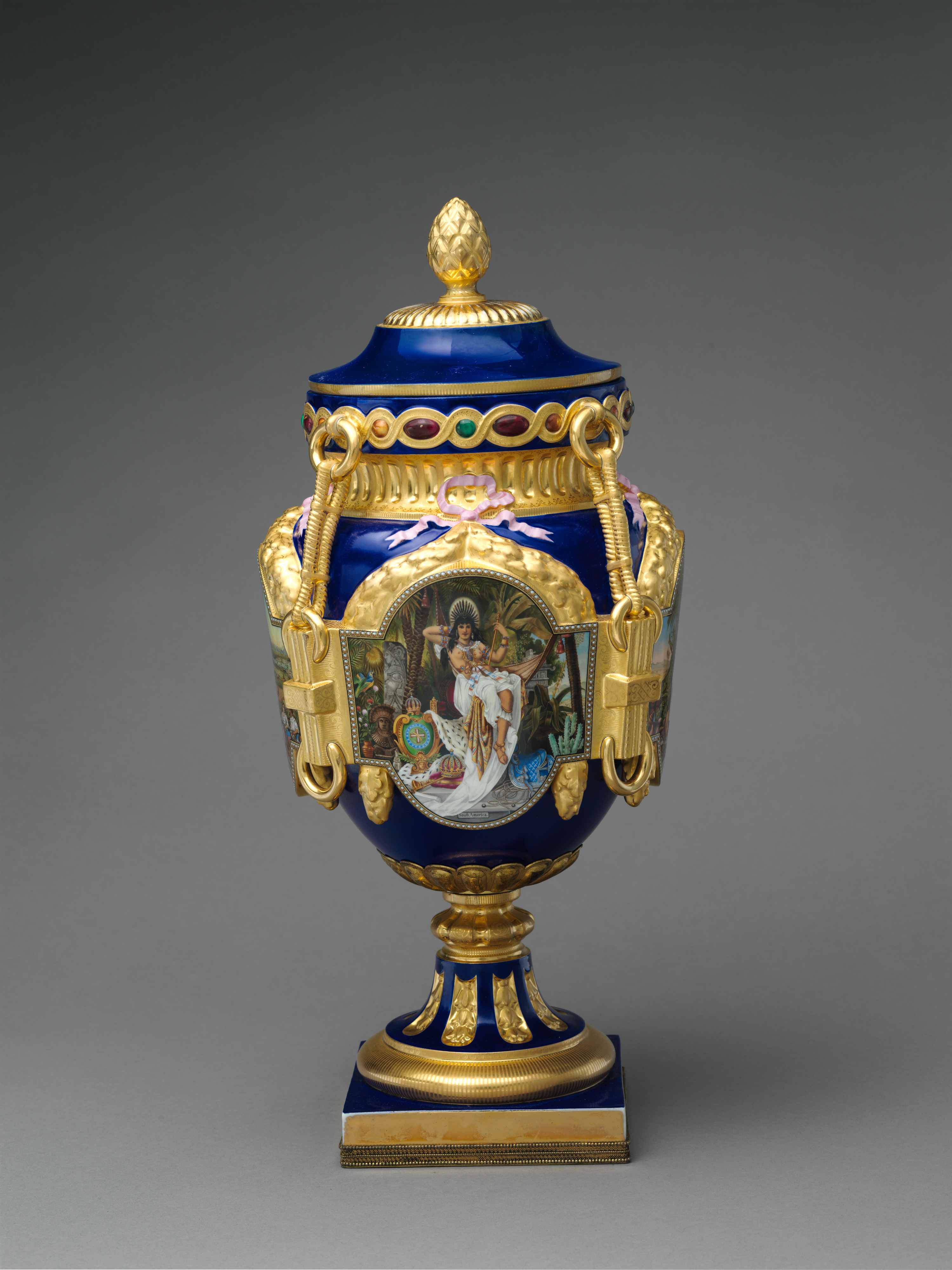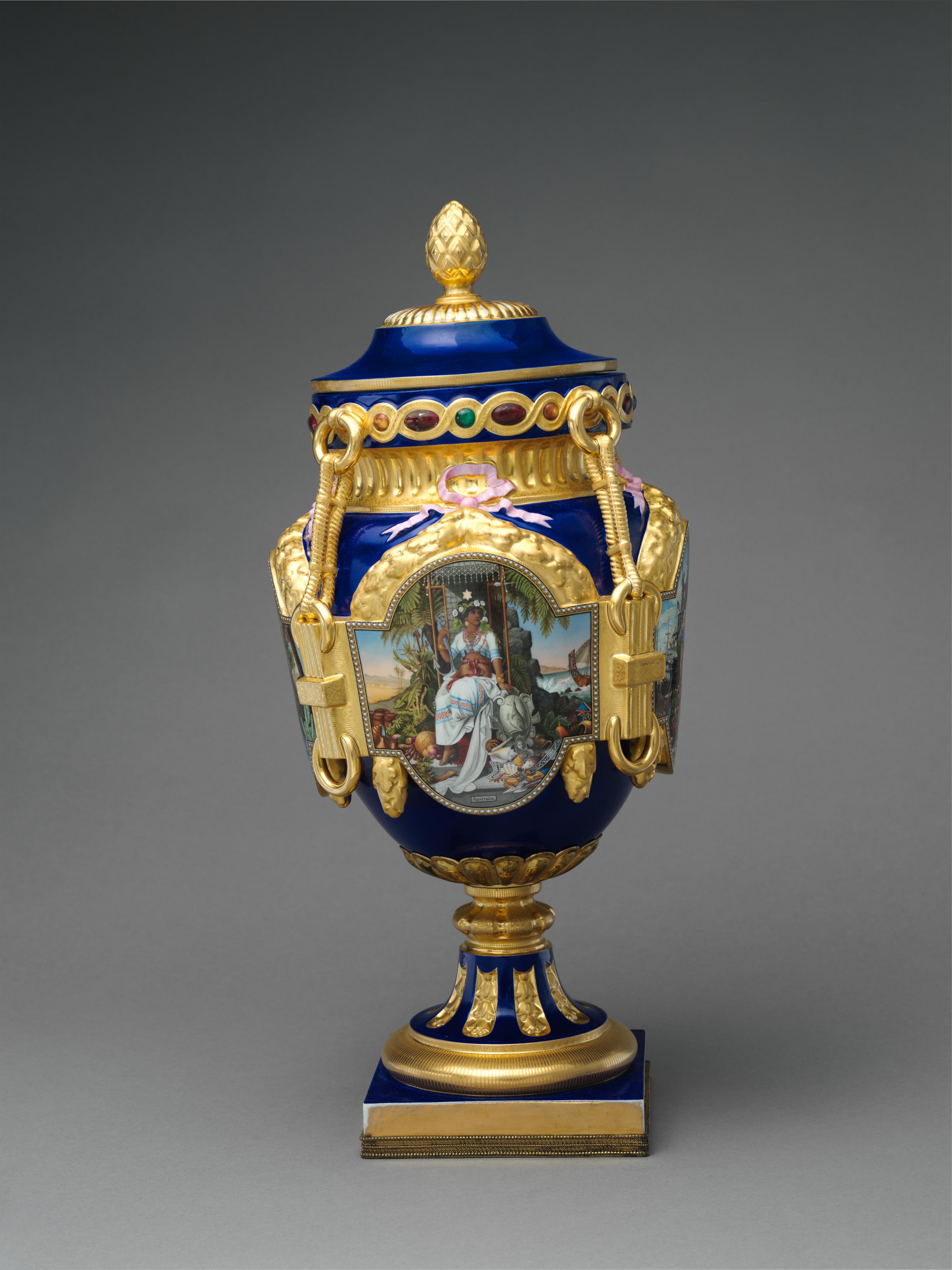Vase (New World)
Decorated by Joseph S. Potter American
These vases provide a rich iconographic narrative of a particular world view from from the point of view of a worldly American statesman in the late nineteenth century, as exemplified by the eight allegorical vignettes. They were decorated by Joseph S. Potter, an American diplomat, while he was stationed in Germany, during the late 1870s and 1880s. The vases were made in an unidentified European factory and their shapes are based on a sumptuous mid- to late-eighteenth century Sèvres form (Vase ferré). They feature a rich blue ground and are elaborately gilded. Their main interest, however, is the group of eight meticulously painted vignettes (four on each vase) depicting allegorical figures and attributes of the New and Old Worlds (Old World, Asia, Africa, and Europe; New World, North America, South America, and Australia).
Potter’s work was first discovered through an album acquired by the Museum in 1997; it took 21 years before his tour de force came to light. Potter was something of a Renaissance man. Born in Syracuse in 1822, he exhibited his entrepreneurial skills at age seventeen when he started a daily newspaper in Albany. He continued in his printing career in Baltimore and later in Massachusetts, where he became the official state printer and where he also printed anti-slavery broadsides and political treatises. While in Massachusetts, he entered the political arena, and campaigned for his home town, West Cambridge (Arlington), a suburb, to be incorporated into the city of Boston. He also espoused Olmsted’s theories of green spaces, and opened as a public park land he had purchased and landscaped.
In 1875, he was appointed by Ulysses S. Grant to be United States Consul to Germany until 1890. It was there that his china decorating career began. Having visited the Meissen works and its decorators and having been inspired by ladies in the consulate taking lessons in china painting, Potter became highly proficient and proceeded to ornament porcelain with truly meticulous skill. The range of enamel colors is impressive, and the artist has integrated the plethora of images in astonishingly synthetic and aesthetic compositions. On these vases, with the skill of a miniaturist, Potter artistically portrayed the eight female allegories and artistically and sometimes bizarrely conceived and rendered the myriad attributes that surround the central figure.
Comparing, for example, the Old World and the New World vases, the Old World is represented by a poor, bare-footed slightly older woman in a crude interior with a bare wood floor and half-knitted sock at her feet. An old woman is seated to the right and a simple wooden table is modestly set. Tools on the floor and on the wall are rudimentary hand tools such as an ax, rake, scythe, and spinning wheel. By contrast, the New World vignette depicts a much younger woman, clad in finery with stockings and shoes and a contemporary carpet and a fully furnished interior that includes upholstered furniture, and a sculpted marble mantelpiece with garniture. Pictures hanging on the wall are a version of Gilbert Stuart’s George Washington, a map of North and South America (whose allegorical vignettes also appear on the vase), and a Hudson River painting. To the right is Mount Vernon, and instead of the rudimentary tools, a farmer is cutting fields with a more mechanized and efficient horse-drawn reaper. Similar and extensive iconography populates the other vignettes.
Due to rights restrictions, this image cannot be enlarged, viewed at full screen, or downloaded.
This artwork is meant to be viewed from right to left. Scroll left to view more.









